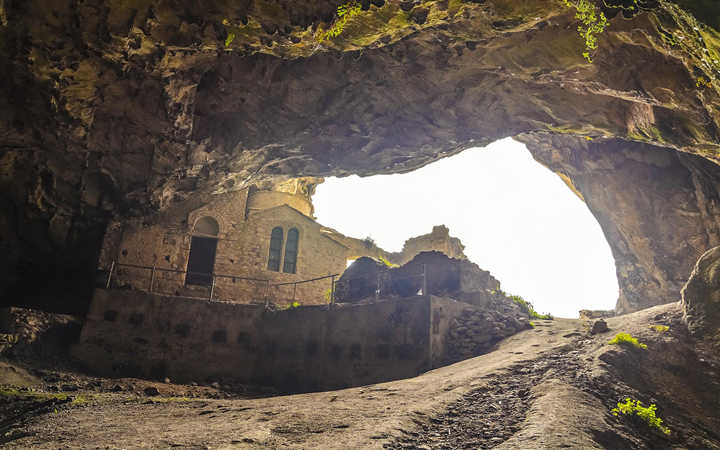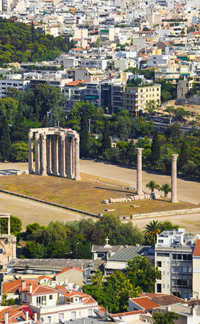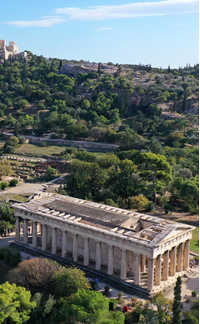Just a short drive from central Athens, rising above the Attica region, lies Mount Penteli — a mountain famed not only for its ancient quarries that supplied the brilliant white marble for the Parthenon, but also for harboring one of Greece’s most enigmatic and mystical sites: the Davelis Cave, often whispered about as a possible “gate to Hades.”
The Enigmatic Cave of Davelis
Carved into the southeastern slope of the mountain at an altitude of 720 meters, Davelis Cave is more than just a geological formation — it's a portal to centuries of myth, mystery, and even modern conspiracy. Named after the 19th-century bandit Christos Davelis, who allegedly used the cave’s catacombs as a hideout, the cave continues to evoke awe and unease. Its ancient network of tunnels and narrow passageways stretches deep into the earth, their full extent still unknown. Some visitors claim that the paths they once followed within the cave vanish upon their return — a baffling phenomenon that fuels the cave’s legendary status as a shifting and elusive place.
Byzantine Chapels and Ancient Shrines
Right at the cave’s entrance stands a tiny Byzantine chapel, an unusual feature for a cave site, while deeper inside lies a far more ancient shrine thought to have been dedicated to Pan, the half-goat god of the wild. Echoes of ancient rituals and sacred energies still seem to linger in the shadows, especially for those sensitive to the site’s strong spiritual atmosphere.
Legends, Language, and Paranormal Phenomena
In antiquity, the mountain’s name was associated with the term “Pyli en Teli” — roughly meaning “Gate of the End.” Some interpret this as a symbolic reference to the cave’s supposed role as a spiritual threshold between worlds, an interpretation seemingly supported by decades of paranormal reports. Witnesses have described strange lights hovering over the mountain, inexplicable sounds echoing from the depths, and unusual temperature fluctuations within the cave — despite the natural consistency of underground climate conditions. In fact, investigations in the late 1990s by the Athens Society for Paranormal Research documented temperature shifts of up to 10°C occurring nightly at precisely 1:00 a.m., accompanied by disembodied rooster-like calls that defied audio recording.
To make things even more surreal, symbols etched or drawn on the cave’s interior walls — including a mysterious handprint — have reportedly moved locations over the years. Whether by human trickery or something more unexplainable, no one can say for sure.
Military Projects and Mysteries Left Behind
The cave has also drawn the interest of military and scientific authorities. In the late 1990s, under a NATO-related initiative, the Greek military attempted to convert parts of the old marble quarries into a subterranean facility. Yet the project was suddenly and mysteriously abandoned, citing “excessive humidity” — a reason many locals view with skepticism.
A Hidden Sanctuary for Seekers
Though much of the cave complex is now off-limits to the general public, Davelis Cave continues to attract adventurers, spiritual seekers, and amateur paranormal investigators, as well as speleologists following in the footsteps of Giannis and Anna Petrochilos, the husband-and-wife team who thoroughly documented the cave’s structure decades ago. Historically, the cave was also known as Spilaio ton Amomon — “The Cave of the Immaculate” — suggesting that only the purest souls were once permitted entry. Today, it seems the mountain still guards its secrets, revealing them only to those who are meant to see.
If you’re looking to explore a side of Greece where ancient history meets the supernatural, and where myth feels startlingly close to reality, a trek to Penteli and the Davelis Cave may offer far more than you expect — or are prepared to understand.


















